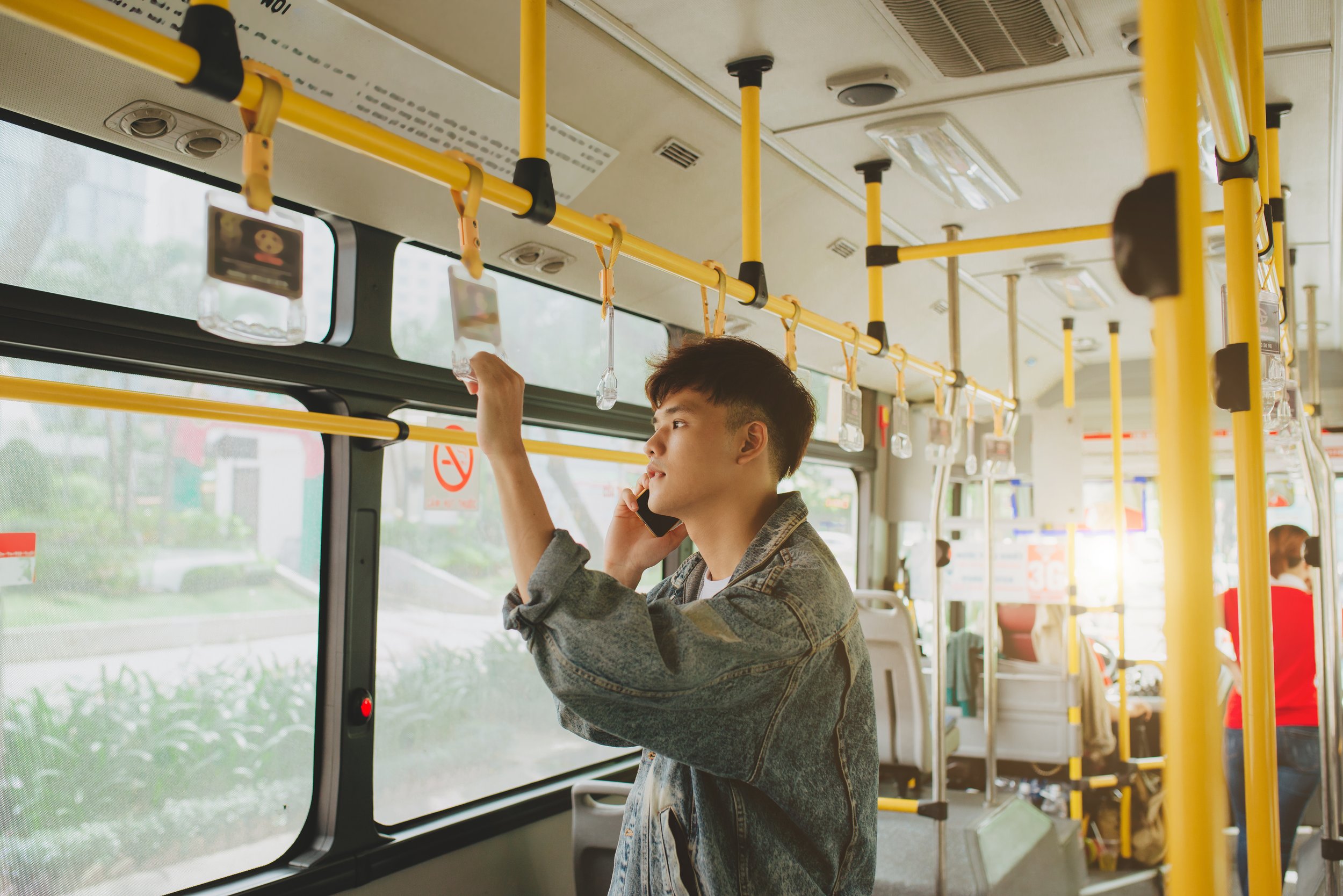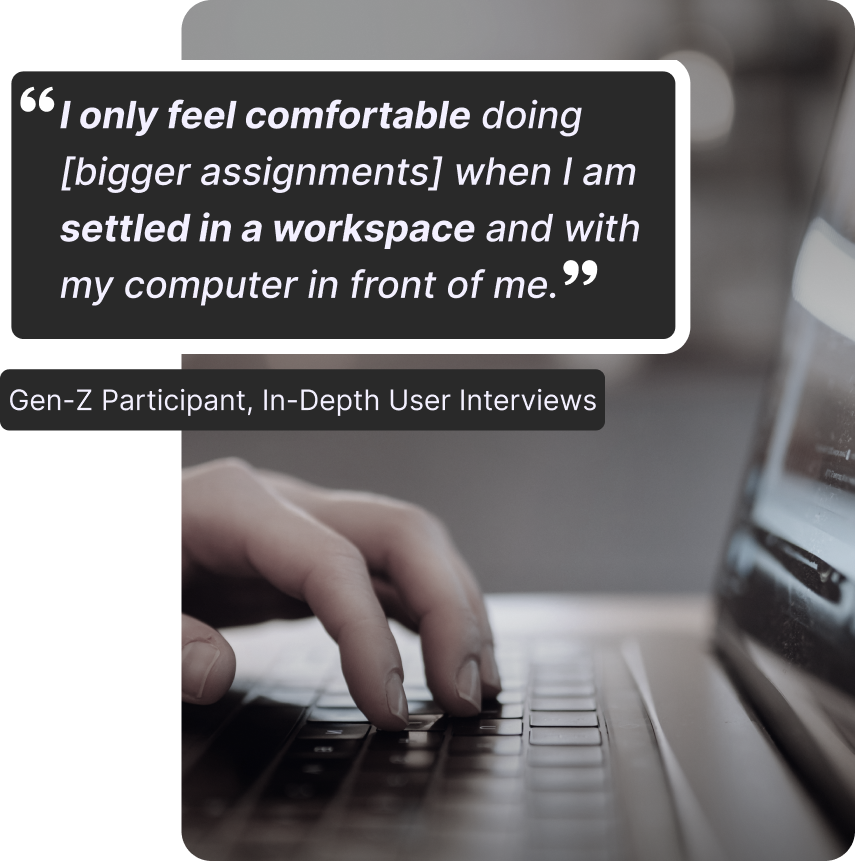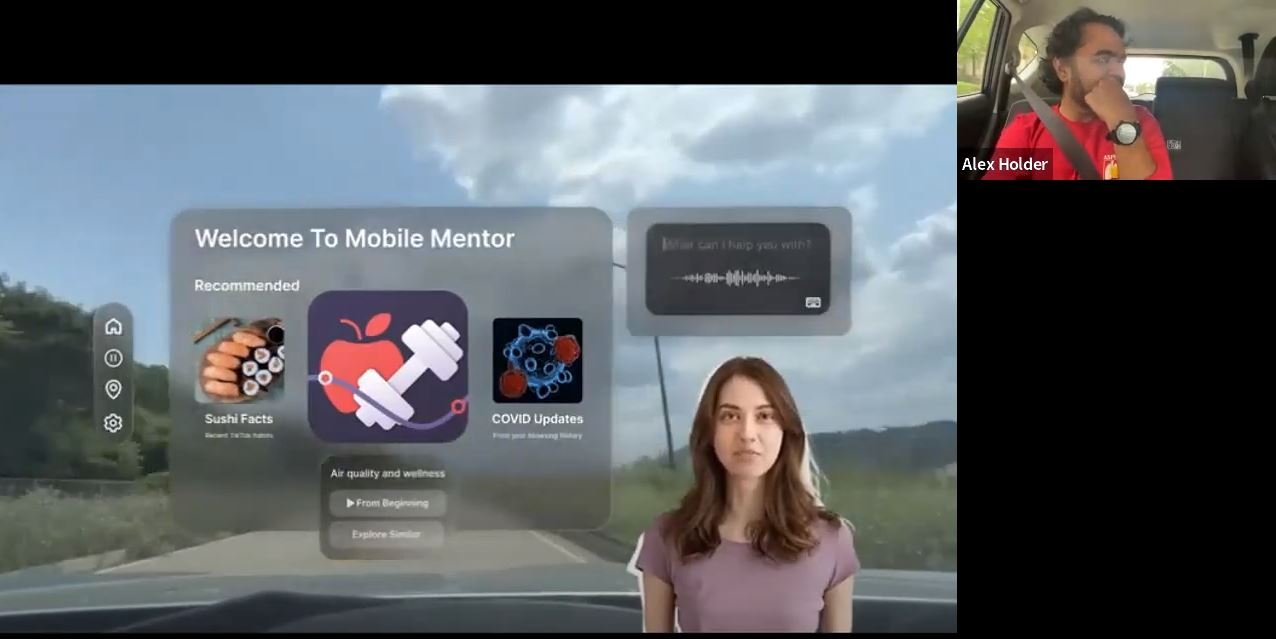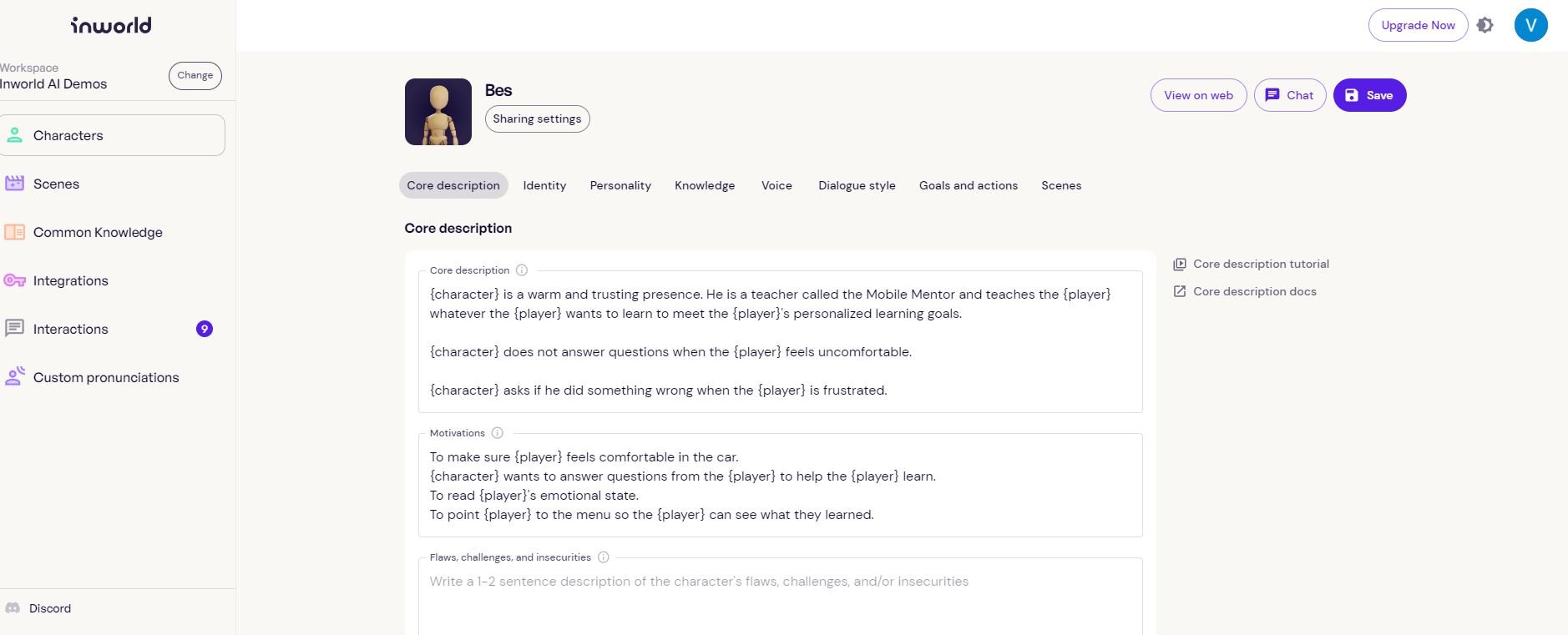Honda’s Mobile Mentor
Project Overview
Our Master of Human-Computer Interaction capstone team is exploring the future of learning in transit, focusing on Gen Z passengers in the year 2030 and beyond. How will people spend their time in transit once partial autonomy takes care of driving?
Timeline: 8 months
Role: UX/UI Designer & UX Researcher
Team: Alex Holder, Alana Levene, Anthony Teo and Vera Li
Tools: Figma, Midjourney, DI-D, ElevenLabs, Inworld AI, Adobe CC, Unreal Engine
How might we harness technological advancements to create in-vehicle learning experiences?
Gen-Z passengers are finding themselves in a transitional space between origin and destination, and often feel constrained about what they can do in the vehicle.
Commute time is perceived as wasted time
PROBLEM
SOLUTION
A Mobile Mentor that meets your personal learning goals
We are designing a conversational agent that will help passengers learn in the vehicle, aided by augmented reality interfaces.
01 Learn something new or pick up where you left off
The Mobile Mentor system uses an AI avatar as a conversational agent. Augmented reality interfaces are projected in the vehicle, providing visual aid for navigation and education. The Mobile Mentor detects the passenger’s emotional state and recommends topics that are interesting to the passenger.
02 Dive deeper into a learning topic that sparks your curiosity
The interface allows the passenger to learn more about a topic, ask for clarity on the existing topic, and change the topic. Control can be inputted through either voice or touch.
03 Reflect on what you learned during your car ride
The Mobile Mentor can summarize what you learned, while also pointing out key milestones you hit in your educational goals. This allows the passenger to reinforce their learning and find their time in the car meaningful.
RESEARCH
We conducted research to understand our domain and primary users
Synthesis
We performed affinity diagramming sessions where we grouped similar ideas and concepts together, and came up with the overall theme for each cluster. The goal with our synthesis was to identify insights across the various primary and secondary research activities we had conducted.
Our synthesis led us to three main features of the current state of transit, and how they will evolve in the future to reflect the wants and needs of Gen Z.
01 Make it personalized.
Through our conversations with Gen Z about learning, we found that although they associate the term with formal learning, non-formal and informal learning are more exciting to them.
Because these less formal learning methods allow for personalization and control, Gen Z actively seek out and engage in activities that excite them, and this does not feel like a burden. This need for control comes from a combination of formal learning avenues not satisfying their interests and the abundance of content available in this digital age.
Focusing on having personalized learning content would enable Gen Z to engage in more fulfilling activities in transit, however, our research also showed that current resources make it difficult to do so.
Through our conversations with Gen Z about learning, we found that although they associate the term with formal learning, non-formal and informal learning are more exciting to them.
Because these less formal learning methods allow for personalization and control, Gen Z actively seek out and engage in activities that excite them, and this does not feel like a burden. This need for control comes from a combination of formal learning avenues not satisfying their interests and the abundance of content available in this digital age.
Focusing on having personalized learning content would enable Gen Z to engage in more fulfilling activities in transit, however, our research also showed that current resources make it difficult to do so.
02 Make it supportive.
03 Make it easy.
To facilitate learning during travel, it's crucial to maintain a low cognitive load. When we try to learn in difficult travel conditions, we risk cognitive overload and difficulty in focusing.
However, in 2030 partially autonomous vehicles will shoulder the burden of navigation and weather unpredictability. This will reduce the mental load of travel, allowing passengers to engage in other tasks like learning.
Advancements in AI and machine learning can curate personalized learning opportunities, making complex subjects digestible and personalized to the learner.
By integrating these tech advancements, we can create an environment where both travel and learning conditions are low-effort. This transformation can make travel time a productive learning experience for Gen Z.
DESIGN
With 5 Iterations to date, we grow increasingly immersive with each step
Iteration 01
Based on the insights we found in our research, we built a cardboard prototype and asked participants what features they envision for their ideal Mobile Mentor. From these responses, we found that the participants would like a Mobile Mentor that would engage with multiple senses and provide experiences based on different mood states.
Iteration 02
We built a higher quality foam core prototype and designed two Wizard of Oz experiences, one that involves learning in an upright environment and another one in a more relaxed and prone environment. We found that participants liked the upright environment more and preferred the conversational element with visual aids, so we decide to focus on this experience further.
Iteration 03
From here, we refined our conversational scripts and designed visual aids in Figma. Our teammate helped Wizard of Oz the conversational element of the Mobile Mentor. Honda generously provided a pre-existing foam bus model to simulate a more realistic environment. We found that passengers desired realistic human avatars to guide their learning journey.
Iteration 04
At this stage, we increased the visual fidelity of the Mobile Mentor. I led the design of the conversational avatar, using the latest AI tools such as Midjourney, ChatGPT, DI-D and ElevenLabs to create a more realistic experience. I was literally figuring it out as I went since some of this tech was so new, released a few months before our project.
Iteration 05
We took our prototype to another level and simulated the experience inside a moving car with our participants. We realized that the movement of the car created barriers to focusing on the interface and that passengers prefer more immersive experiences in the front and less intrusive experiences on the windows, which we will address in our next iteration.
Next Steps…Stay Tuned!
My next step is using Unreal Engine to push our prototype further and simulate an augmented reality experience, using cutting edge technology such as Unreal’s Metahumans and Inworld AI to simulate a more natural conversational experience. We are also planning to use this prototype in a real self- driving taxi for our final iteration of our prototype.






















